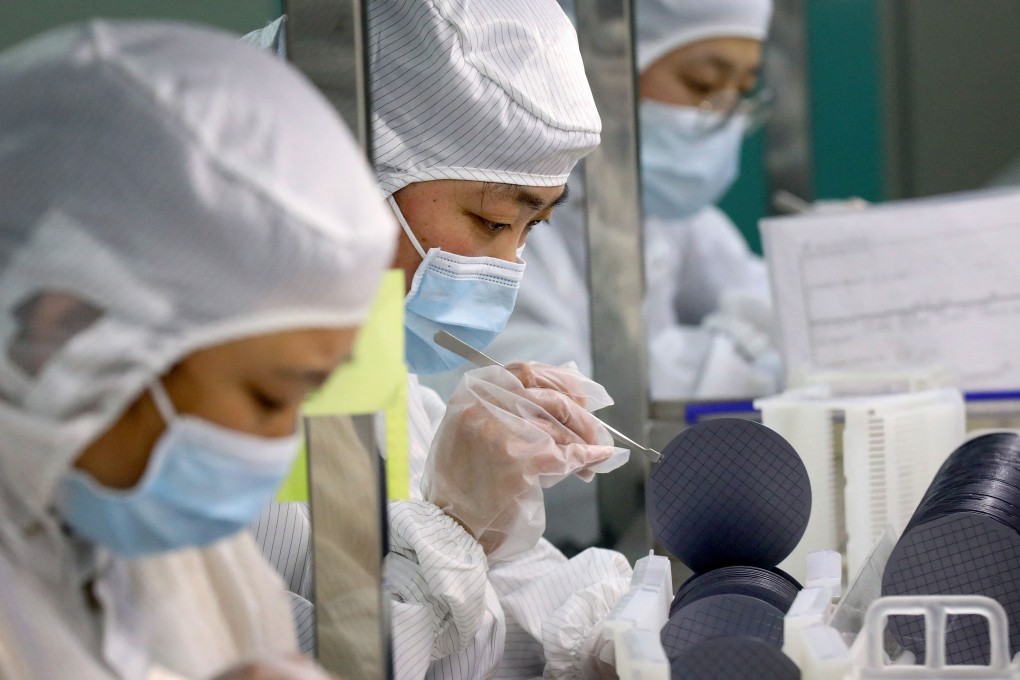China’s semiconductor output drops again in October, signalling bottlenecks amid global chip shortage
- Integrated circuit output fell by 300 million units to 30.1 billion in October, but production was up 22 per cent year on year
- Disrupted supply chains have hurt efforts to increase production capacity at foundries across China, including new projects from SMIC

The volume of China’s integrated circuit (IC) output dropped for the second consecutive month in October, according to the latest government data published on Monday, as supply bottlenecks emerge amid a shortage of global chip production capacity.
China’s IC output fell to 30.1 billion units in October from 30.4 billion in September, and a record-high of 32.1 billion in August, the National Bureau of Statistics said. Chip output was up 22.2 per cent for the month year on year, the agency added.
The fall in the past two months could be a reflection of the impact of disruptions in the global semiconductor supply chain, analysts said. The lead time for chip-making equipment, referring to the time between when an order is placed and when the equipment reaches the factory floor, has extended to 12 months, according to a recent note from Shanghai-based research company ICWise. The average delay has reached six months, hindering expansion plans at Chinese foundries.
SMIC said last week that plans to expand capacity have faced constraints from logistics disruptions, extended lead times, and US licensing requirements. The company’s overall capacity increased to 594,000 8-inch equivalent wafers in the quarter ended September, 32,000 more than in the June quarter, according to SMIC’s Co-CEO Zhao Haijun.
By the end of September, China had 33 production lines, including both planned lines and those being constructed, for 8-inch wafer manufacturing and 41 lines for 12-inch wafers, which in theory could churn out 1.13 million 12-inch equivalent wafers per month, ICWise’s note said.